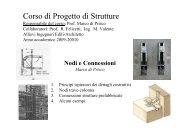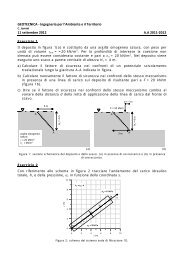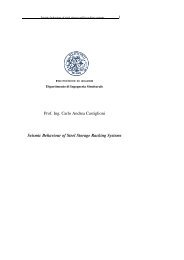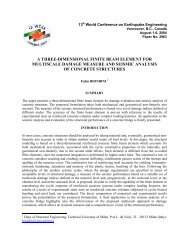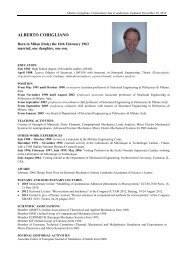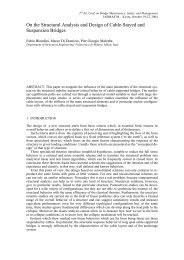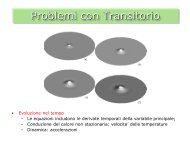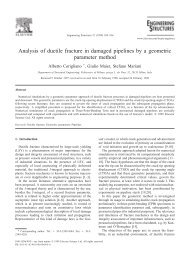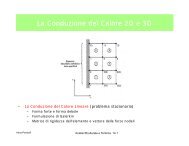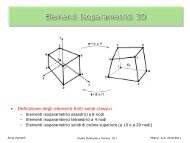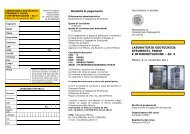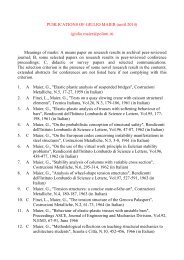Finite Strip Modeling for Optimal Design of Folded Plate Structures
Finite Strip Modeling for Optimal Design of Folded Plate Structures
Finite Strip Modeling for Optimal Design of Folded Plate Structures
You also want an ePaper? Increase the reach of your titles
YUMPU automatically turns print PDFs into web optimized ePapers that Google loves.
1044 A. Bergamini, F. Biondini / Engineering <strong>Structures</strong> 26 (2004) 1043–1054Fig. 1. Some examples <strong>of</strong> structures <strong>for</strong> which both the geometry and the material properties can be considered constants along a main direction.(a) Bridge decks with prestressed girders and box-girder bridges; (b) Prestressed prismatic and cylindrical shell ro<strong>of</strong>s; (c) Prestressed thin-walledbeams.classical modeling techniques, eventual prestressing systemscan also be properly modeled by means <strong>of</strong> a set <strong>of</strong>loads equivalent to the prestressing actions taking bothinstantaneous and time dependent losses into account.Basedon such kind<strong>of</strong> modeling, the choice <strong>of</strong> thedesign variables considers (a) geometrical quantities,like the thickness andthe dimensions <strong>of</strong> the finitestrips, (b) topological parameters, which define thelocation andthe connectivity <strong>of</strong> such elements, and(c)the characteristics <strong>of</strong> the eventual prestressing system,described by the prestressing <strong>for</strong>ces and the cables pr<strong>of</strong>ile.In particular, the design space <strong>of</strong> feasible structuralmorphologies is restrictedto satisfy physical andtechnologicallimits on the design variables, as well as givenlimit states on both the stress andthe displacementstates which define the structural behavior at the serviceabilitystage. In the selection <strong>of</strong> these design constraints,special attention is paidto the definition <strong>of</strong> aproper de<strong>for</strong>mability index which accounts <strong>for</strong> theparticular nature <strong>of</strong> the structures investigatedin thepresent work. The optimal choice within this set <strong>of</strong>feasible solutions is basedon the definition <strong>of</strong> an objectivefunction to be minimizedwhich represents aweightedsum <strong>of</strong> the structural volume andthe totalprestressing <strong>for</strong>ce. The solution <strong>of</strong> the correspondingnon-linear optimization problem is achievedby using anumerical procedure based on the well-known complexmethod [2,12].Fig. 2. Reference systems and finite element model. (a) <strong>Finite</strong> strip element between the nodal lines i and j in the local reference system (x,y,z);(b) <strong>Finite</strong> strip modeling <strong>of</strong> the structure in the global reference system (X,Y,Z); (c) Thickness distribution <strong>of</strong> the cross-section.




